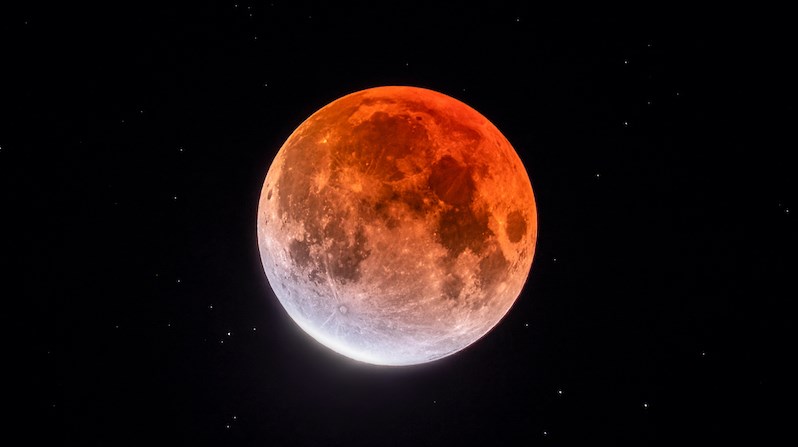A local photographer is sharing spellbinding images he captured of the longest partial lunar eclipse in Vancouver skies.
For Liron Gertsman, studying the sky is a passion unparalleled. The 20-year-old deep space enthusiast revels in revealing the glittering constellations lost in the expansive dark above us.
Most recently, however, the Vancouver-based astrophotographer had the opportunity to capture a decidedly rare event. He told Vancouver Is Awesome that most of the world was treated to the beautiful display, too.
This part of the eclipse was visible in all of North America, as well as large parts of South America, Polynesia, eastern Australia, and northeastern Asia.
In total, the eclipse lasted for three hours, 28 minutes and 23 seconds; it was also the longest lunar eclipse in 580 years, according to Space.com.
"When the moon passes through Earth’s shadow, it glows in a striking reddish colour due to scattering of light (the same reason sunsets are a similar reddish tone)," he described.
"Despite a rainy day leading up to the eclipse, breaks in the clouds formed at the right time here in Vancouver to reveal the beautiful spectacle. I shot this image at around 1 a.m., at the peak of the eclipse!"
The lunar event also coincided with the full beaver moon.
Why the full "beaver" Moon?
"This is the time of year when beavers begin to take shelter in their lodges, having laid up sufficient stores of food for the long winter ahead,” reports Farmer’s Almanac. "During the time of the fur trade in North America, it was also the season to trap beavers for their thick, winter-ready pelts."
While it is commonly known as the beaver moon, it was also called the full frost moon by other North American tribes.
Other photography highlights from Gertsman in Vancouver
Back in March, NASA featured the photographer's jaw-dropping photograph of two nebulae glowing vibrantly above The Lions — known as the Two Sisters or Ch'ich'iyúy Elxwíkn, in the Squamish language — as the space agency's coveted "picture of the day."
The spellbinding snap features the North America and Pelican Nebulae beaming above the mountain peaks, in several shades of pink and red.
In July 2020, Gertsman shared another remarkable image of a rare comet and Aurora Borealis at Harrison Lake.
The Neowise comet, discovered in March by NASA’s Neowise infrared space telescope, reached its closest point to the sun on July 3 last year, which caused the “frozen ice ball” to heat up and burn gas and dust off its surface.
Follow Gertsman on Instagram or check out his photography on his website.




